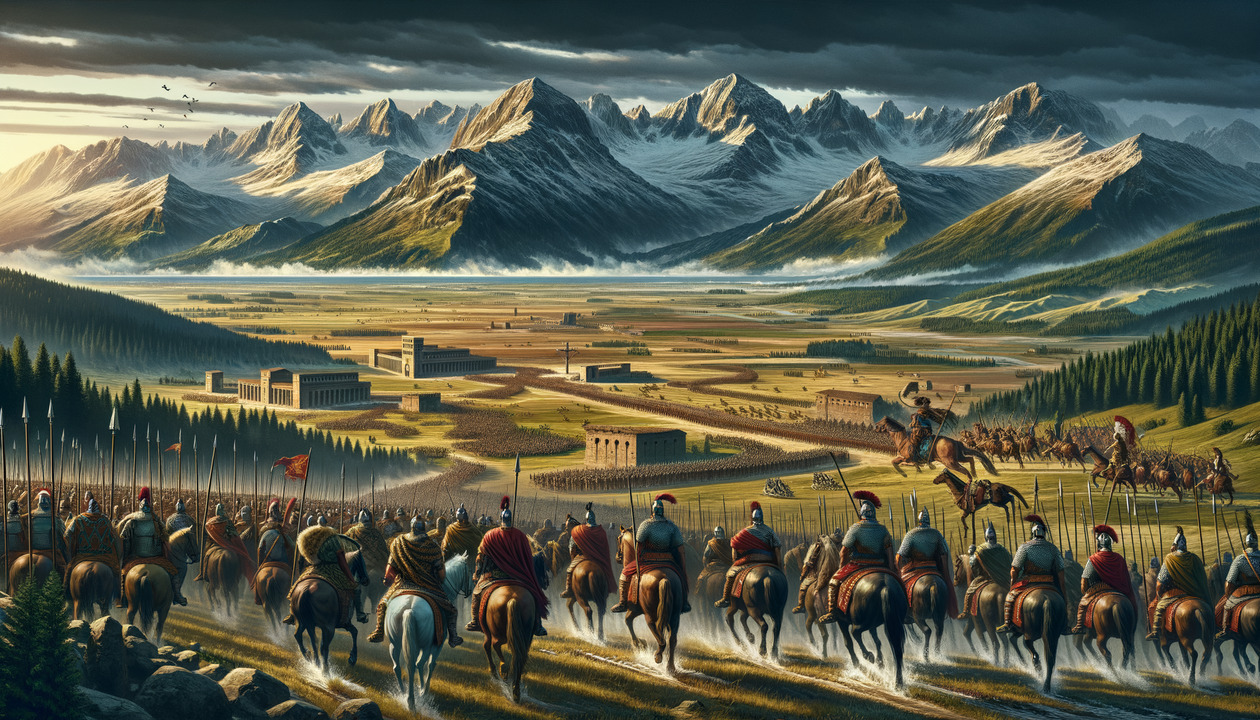
Invasion of Italy (452 AD)
Attila's invasion led to the sacking of cities like Aquileia and reaching the Po River. It caused massive displacement and panic, illustrating his ability to instill fear and maintain pressure.
Introduction
In the year 452 AD, the infamous Hunnic ruler, Attila the Hun, embarked on a ferocious invasion of Italy. This campaign marked a significant turning point in the late Roman Empire's struggle against barbarian incursions. Attila's advance into the heart of the Italian peninsula showcased not only his strategic prowess but also his unparalleled ability to sow fear and chaos across Europe.
The Context of the Invasion
Before his Italian campaign, Attila had already made a name for himself as a formidable leader of the Huns. His forces had previously rampaged across Gaul, reaching as far as the gates of Orléans before being repelled by a Roman-Visigothic coalition at the Battle of the Catalaunian Plains in 451 AD. Undeterred by this setback, Attila turned his sights on Italy, seeking to exploit the weaknesses of the Western Roman Empire.
The Campaign Begins: Crossing the Alps
Attila's journey into Italy was marked by an unwavering tenacity that defined his leadership. With a formidable army, he crossed the Alps, a feat that showcased his military logistics and the loyalty he commanded from his diverse troops. As Attila descended into the fertile plains of Northern Italy, he faced little organized resistance, largely due to the depleted Roman defenses.
The Sacking of Aquileia: A Symbol of Destruction
The ancient city of Aquileia, once a thriving hub of commerce and trade, became one of the most significant casualties of Attila's rampage. Known for its strategic location and wealth, Aquileia found itself directly in Attila's path. The city's fall was nothing short of catastrophic. After a prolonged siege, Attila's forces breached its defenses, resulting in a complete sacking. The destruction of Aquileia sent shockwaves throughout the empire, serving as a stark warning of the fate awaiting other Italian cities.
Advancing to the Po River
After the devastation of Aquileia, Attila's campaign continued southward towards the Po River. This advance was characterized by systematic plundering and destruction, leaving a trail of ruin and despair in its wake. The news of Attila's progress ignited widespread panic among the local populace, leading to mass displacements. Towns and smaller settlements were abandoned as residents fled, preferring the uncertainty of exile over the certainty of destruction.
A Glimpse of Hope: The Meeting with Leo I
Amidst the chaos, one of the most notable episodes of this campaign was the meeting between Attila and Pope Leo I near Mantua. The details of their encounter remain shrouded in legend, but it is widely believed that this intervention was instrumental in persuading Attila to halt his advance and withdraw from Italy. Whether it was Leo's words, the threat of famine, or the lure of other conquests, Attila's decision marked a rare moment of relief for the battered region.
Legacy and Impact
The invasion of Italy in 452 AD was a testament to Attila's fearsome reputation as a military leader. His ability to inspire terror and maintain relentless pressure on the Roman Empire underscored the challenges faced by the once-mighty civilization. While Attila's subsequent retreat did not spell the end for the Roman Empire, it did foreshadow the looming collapse that would soon follow.
In the aftermath of Attila's invasion, Italy became forever scarred by the memory of the Hunnic incursions. The ruins left in his wake were a poignant reminder of the period's vulnerabilities and the relentless barbarians at the gates of Rome. Attila's invasion remains a potent symbol of the changing tides that gradually led to the fall of the Western Roman Empire, making it a significant chapter in the annals of history.
Conclusion
Attila's invasion of Italy is a narrative rich with fear, displacement, and devastation. It captures the essence of a world on the brink of transformation, where the boundaries of the known world were being redrawn under the hoofbeats of an unstoppable force. As history reflects on this period, the shadow of Attila looms large, exemplifying the might of the Hunnic Empire and the enduring impact of its conquests.